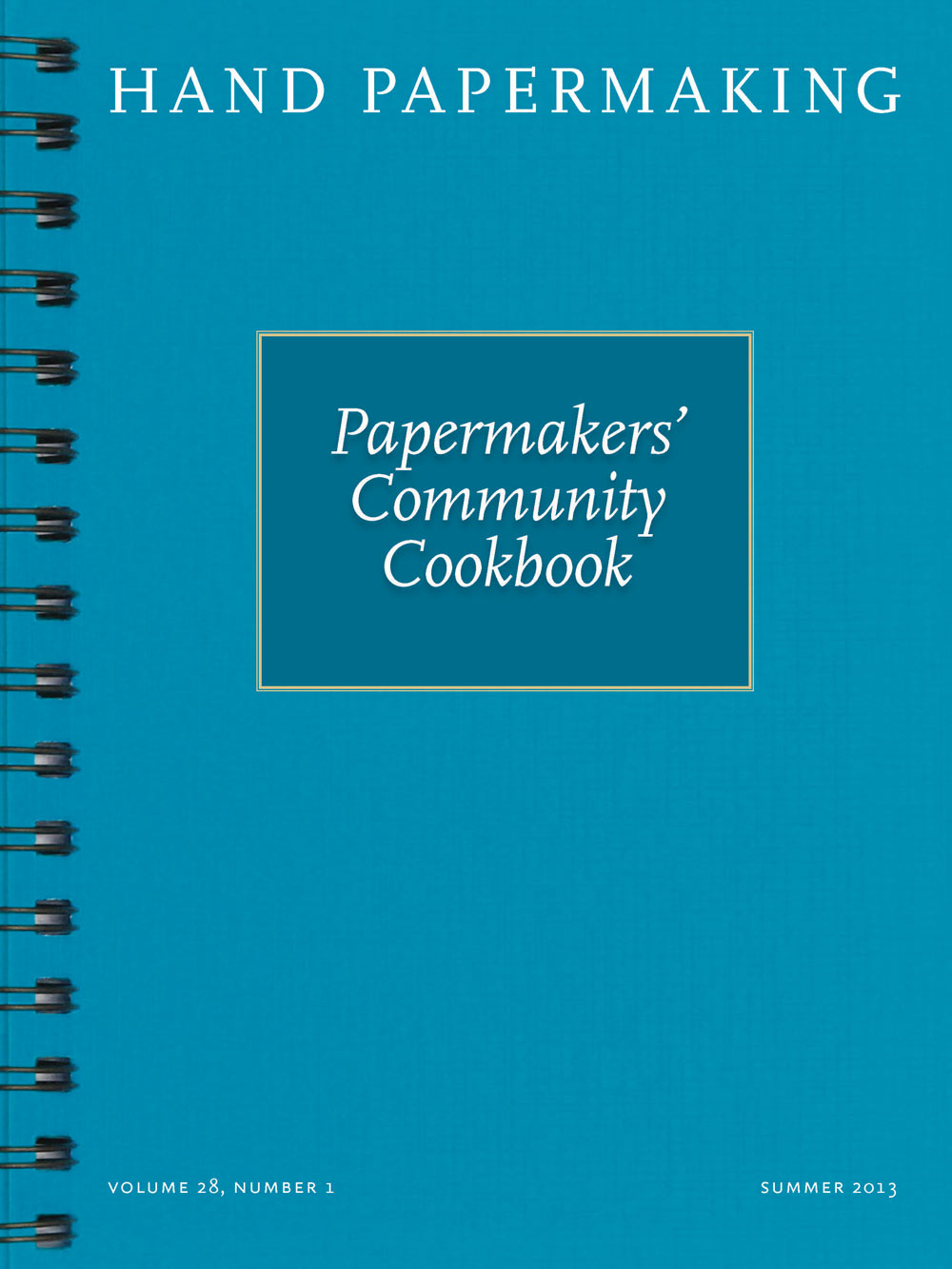
Summer 2013
:
Volume
28
, Number
1
Beck Whitehead is Chair, Papermaking and Book Arts at the Southwest School of Art in San Antonio, Texas. Whitehead has been working with paper pulp since 1985. She creates paper paintings, sculptures, and one-of-a-kind books. Her work has been exhibited at the Robert C. Williams American Museum of Papermaking in Atlanta, Georgia, and Sonoma Valley Museum of Art among others. The beater is where paper is made. There is of course the selection of fiber and pre-beating preparation such as cooking. Thin, thick, strong, translucent, smooth or textural—it all depends on how the fiber is prepared. Experimenting with beating times can lead to new ways of working. The beater I first used was built designed by Bernie Vinzani and had no teeth in the bed plate. It did incredible things to abaca as the fiber would slip through without much cutting. After beating for six hours the paper was like skin and very strong. I made a set of paper drums that were used in a drum performance. Now I use a Valley beater which cuts the fiber. Beating abaca for ten to twenty hours leaves the fiber short enough for pulp painting.





